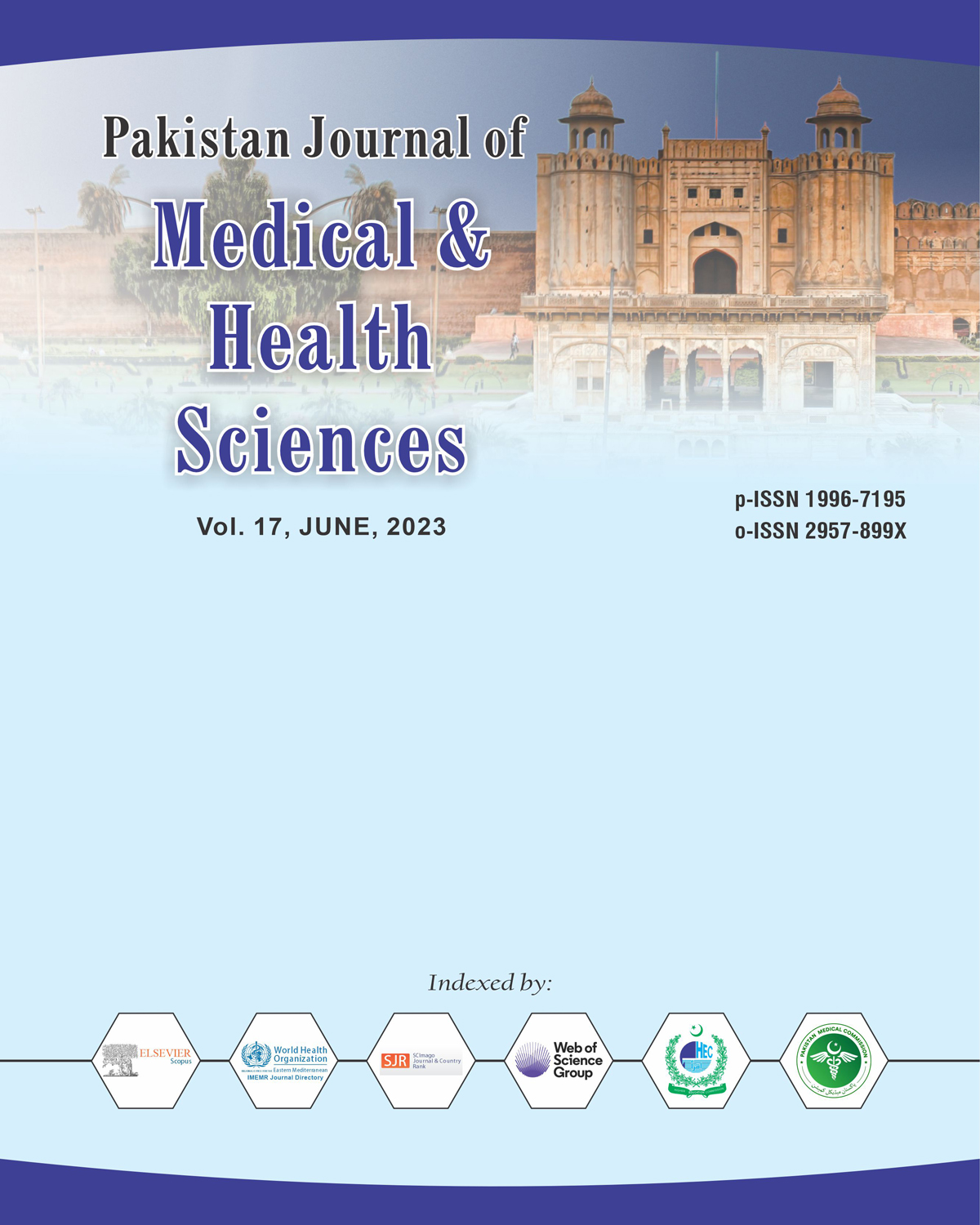Genetic and Developmental Factors to Consider in a Baby with Type 2 Ileal Atresia, Pectus Excavatum, Indirect Inguinal Hernia, and Bilateral Hydroceles
DOI:
https://doi.org/10.53350/pjmhs2023176529Abstract
Objective: The objective was to study a neonate who had type 2 ileal atresia, pectus excavatum, bilateral hydroceles, indirect inguinal hernia, and hereditary factors affecting development.
Methods: This observational study consisted of 135 neonates. Detailed demographic information of the cases that were enrolled was obtained after obtaining explicit written consent. Cases of pectus excavatum, bilateral water retention, type 2 ileal atresia, and indirect inguinal hernia are common. SPSS 22.0 was used to analyze all data.
Results: Mean gestational age of neonates was 38.12 weeks.Mean birth weight of neonate 3,027 g, length was 47.9cm, Family history of PE was found in 27 (20%) among all cases. Among all cases 37 (27.4%) had PE, bilateral hydroceles was found in 23 (17.03%) cases, indirect inguinal hernia in 19 (14.1%) and type 2 ileal atresia in 17 (12.6%).
Conclusion: This study's findings suggest a higher frequency of genetic syndromes in neonates and call for additional research into the causes of these anomalies, which may include developmental disruptions in structures derived from mesoderm or in utero vascular insults.
Keywords: Bilateral Hydroceles, Pectus Excavatum, Type 2 Ileal Atresia, Indirect Inguinal Hernia
Downloads
How to Cite
Issue
Section
License
Copyright (c) 2023 Muhammad Fayyaz, Khadija Ahmad, Sadia Asmat Burki, Imtiaz Ahmed Qureshi

This work is licensed under a Creative Commons Attribution 4.0 International License.


